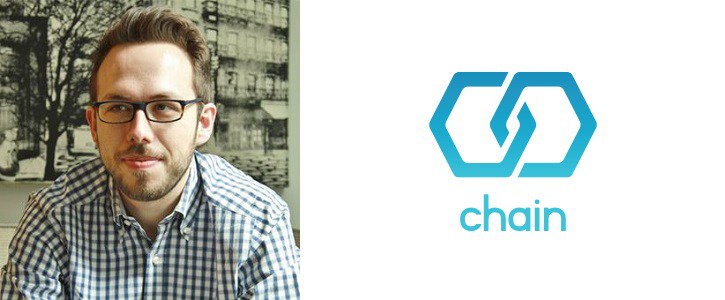Chain, a Silicon Valley startup focused on blockchain technology, has announced the release of Open Standards One (OS 1), an open source blockchain protocol.
It has been developed over the past 18 months in collaboration with a number of financial institutions including Visa, Nasdaq, Citi, Fidelity, and Capital One.
The VC backed startup, which raised $45 million, aims to transform already existing assets, such as loans or dollars, into non-double-spendable and easily transferable blockchain records, digitizing assets and turning them into digital bearer instruments.
The technology was showcased in secret last month at Chain Partner Summit held at Nasdaq’s Times Square offices where 100 executives witnessed the transformation of dollars into digital cash. It has now been released to the public as open source to ensure interoperability.
Collaboration with global financial institutions
OS1 has been built in close collaboration with global financial institutions with the release being the culmination of many months of “iteration and problem solving” according to Jim McCarthy, executive vice president, Innovation & Strategic Partnerships at Visa. “Many of [the financial institutions] are very far down the pathway of bringing this to market,” says Adam Ludwin, CEO of Chain who further expanded at Consensus 2016 to state:
“It’s a secure blockchain protocol specifically for high scale financial markets. It’s not meant to be for everyone, it’s not meant to solve every problem. It’s meant to solve the problem of powering high scale financial markets and moving assets digitally over them.”
OS1 uses a Simplified Byzantine Fault Tolerance (SBFT) consensus system among identified and permissioned validators (nodes) with a capacity for tens of thousands of transactions per second.

Zero-knowledge proofs
It ensures privacy by the use of zero-knowledge proofs that conceal amounts transacted from everyone else but the transacting parties while allowing the entire network to validate the integrity of transactions.
Ownership is established through encrypted metadata with the assets programmable through smart contracts operating in a virtual machine which supports contract enforcement and Turing complete programs.
It is already being used by leading financial institutions with Debby Hopkins, Chief Innovation Officer of Citi and CEO of Citi Ventures stating that "Chain is enabling Citi to explore blockchain applications for our customers in currencies, payments and beyond."
Brad Peterson, Executive Vice President and CIO at Nasdaq states that Nasdaq has participated in the development of OS1 “through a variety of use cases, including private market securities, proxy voting and clearing."
Hu Liang, Senior Managing Director, Emerging Technologies Center at State Street states that “Chain's protocol supports some of the most complex use cases we have in mind."
Fiat money integrated into the Blockchain
We are still waiting for a blockchain product to hit the market, but OS1 provides the clearest picture so far on how permissioned blockchains may operate. Firstly, through a Chain Core node, institutions are granted access to join the blockchain network and validate or issue assets. Instead of creating a new currency such as bitcoin or creating a new asset, existing dollars or other assets such as loans are transported onto the blockchain.
At that point, they can be easily transferred with settlement in less than a second, according to a press release, providing many benefits to financial institutions, such as reduced costs, increased efficiency and a higher level of automation as “assets and digital financial services become software” according to Ludwin.
It is unclear whether the next logical step will be taken by financial institutions - opening the network to individuals - perhaps through SPV wallets, while maintaining validators as permissioned.
The technology is still very new, therefore building the infrastructure to allow individuals to access a permissioned network may take some time.
However, it is likely to be the turning point, when blockchain hits the mainstream, comparable to when Microsoft brought a computer to every home, and, just as then, give rise to an open source vs proprietary software debate or, in this case, permissioned vs permissionless, a debate that has already began, but may intensify in the coming months and years.
